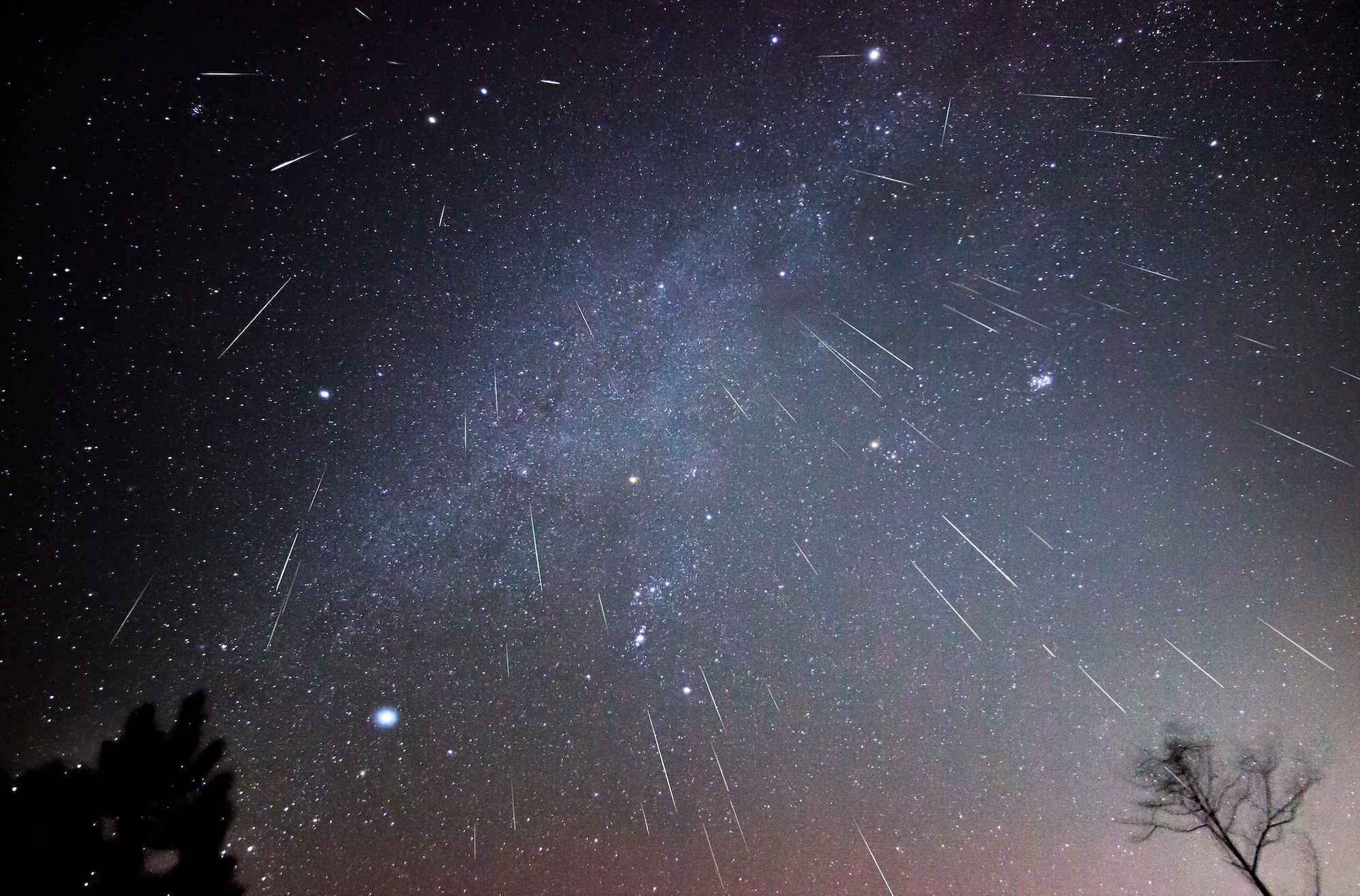Geminid Meteor Shower Peaks On Wednesday And Thursday
You could see more than 100 meteors per hour during the moonless night of December 13-14.

A composite image of the Geminid meteor shower, as captured in Virginia. Credit: Genevieve de Messieres, Shutterstock
Every December, the Earth passes through a river of dust and debris flying off the asteroid 3200 Phaethon as it nears the sun. The particles are no larger than a pea, but they can create brilliant streaks of light as they hit the Earth’s atmosphere at nearly 80,000 miles per hour and vaporize. This is the Geminid meteor shower, and it’s expected to be even more spectacular this year as it coincides with the dark skies that follow the new moon this week.
“This year, we’re lucky,” Dr. Diana Hannikainen, observing editor at Sky & Telescope, said in an email. With the new moon having just passed, she says, “we should—provided skies are clear, of course!—see not only the brighter meteors but also fainter ones.”
The meteor shower started in November and is active for several weeks, but the predicted peak, when Earth is in the densest part of the debris stream, will occur on December 14 during what will be daytime in the Americas. That means the best time to see the Geminids will be the night of December 13 and into the early hours of the 14th. Observers should also be able to see meteors after the peak, on the night of the 14th, Hannikainen says.
To catch the show, try to find a dark area away from city lights, and venture outside, ideally after 10 p.m. local time on Wednesday, December 13. It can take 20 to 30 minutes for your eyes to adjust to the darkness (try not to check your cell phone). If you can, recline in a lounge chair or on a safe spot on the ground and look to the darkest part of the sky.
The meteors’ “radiant,” the point from which they appear to originate, is near a star called Castor in the Gemini constellation—but they can be seen in any part of the sky. You’ll see fewer meteors per hour early in the evening, but the numbers will gradually climb, peaking at around 2:00 a.m. local time in the US, when the radiant is directly overhead. The meteor shower will continue through the predawn hours. The Geminids should be visible to people across the globe during the few days of its peak, though viewers in the Northern Hemisphere are likely to see more meteors than those in the Southern Hemisphere.
Aside from their impressive numbers, the Geminids also appear in a variety of colors. “The most prevalent color is a greenish hue, but some can be yellowish,” Hannikainen said. The colors are caused by the meteor’s chemical composition, with different elements producing different hues as they burn.
If you do decide to take in the last meteor shower of 2023, don’t forget to bundle up, and use something to keep you off the cold ground if necessary. And of course, tell us how it went! We’ll include your quotes and stories below later this week.
Robin Kazmier is Senior Editor, Digital. She writes and edits articles and helps shape Science Friday’s digital strategy. Her favorite bird is the squirrel cuckoo.